Building a new PPC campaign from scratch can be challenging. You can easily miss keywords or add keywords without search volume. Plus, even if you have a great list of keywords, it can be challenging to organize them into tightly themed groups. Using AdWords Keyword Planner can be an excellent way to get started in building out your next campaigns.
Where to Find the Keyword Planner
You can locate the keyword planner inside your AdWords account under Tools > Keyword Planner
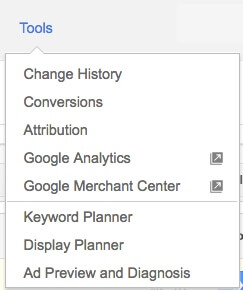
Inside the Keyword Planner, you will see several options to help create a keyword list or even expand your existing keyword list. You can find new keywords by using phrases, website, or category. You can also upload an existing list to get budget forecasts.
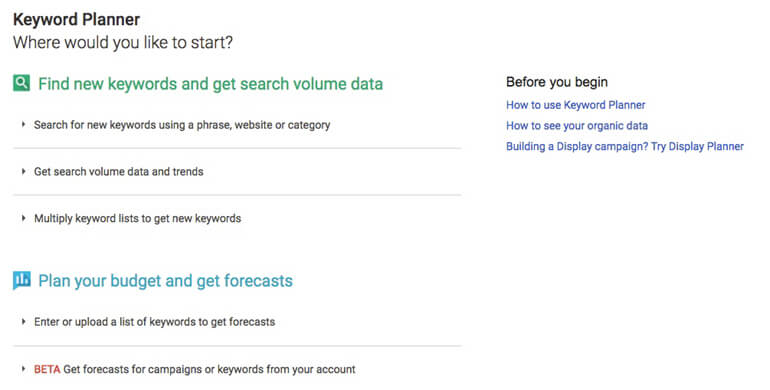
Find New Keywords
You can list out the products or services from your website and the tool will expand your list to find more long-tail keywords. For example, we started creating a list of fine jewelry and wedding rings terms and used this tool to expand our options.
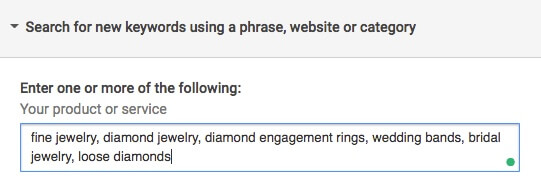
Keyword Planner Ideas
Once you click Get Ideas, the planner will show you the list of keywords you selected along with their average monthly search volume and the suggested bid. So, the term ‘wedding bands’ has an average monthly search volume of 135,000 and they suggest a starting bid around $2.71.
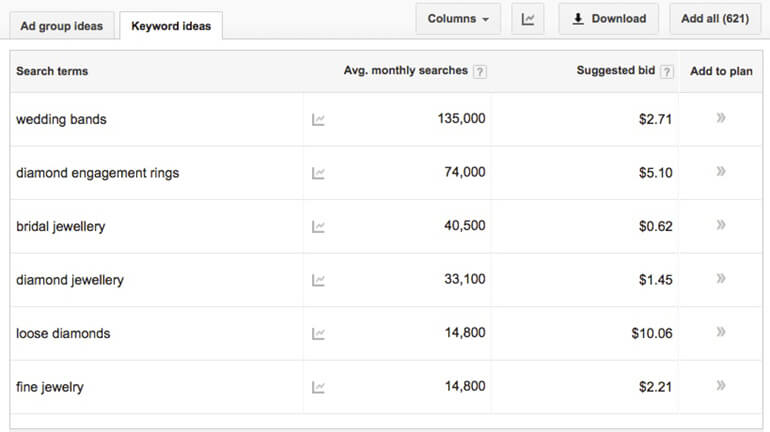
Keyword Planner Expansion
If you scroll further down you will see additional suggested keywords sorted by relevance based on your initial list. You can see that more people search for ‘engagement rings’ than ‘wedding rings’, but the CPC is almost double. You can see that the terms ‘ring’ and ‘jewelry’ that are very broad are also very cheap. You could use these terms in a small campaign to mine for additional customers search queries.
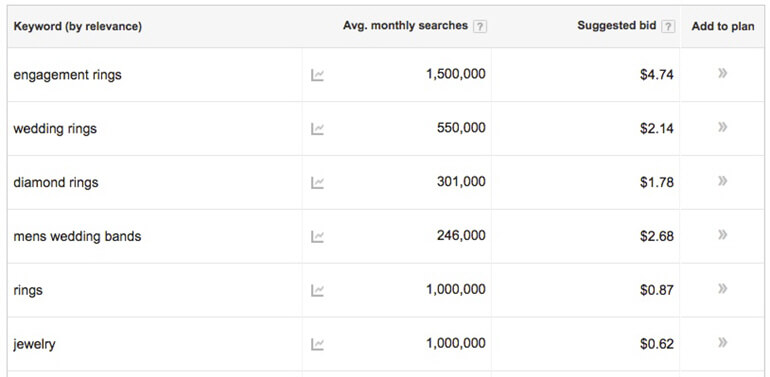
Keyword Planner Ad Group Ideas
Then if you select the Ad group ideas tab, the tool will organize these keywords into tightly themed ad groups and you can create relevant ads for these keywords. This tool will show you the grouped average keyword volume and the suggested starting ad group bid.
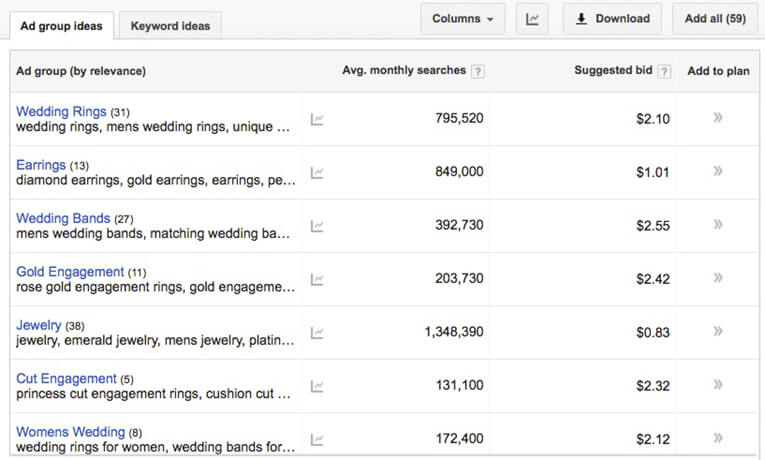
Google Search and Search Partners
Also, on the left side of the page, under Targeting, you can select the Google filter to view the average search volume with and without Google Search Partners. For example, if we choose only Google we can see the term ‘wedding bands’ has an average monthly search volume of 135,000.

If we add the Search Partners, it will show you an estimate of how many monthly searches are available across all networks with the partners. This increase the monthly search volume from 135,000 to 368,000.

Search Partner Measurement
You can determine if the partners are worth it based on performance. After you have some data, under Segments you can select the Network (with Search Partners) to measure performance.
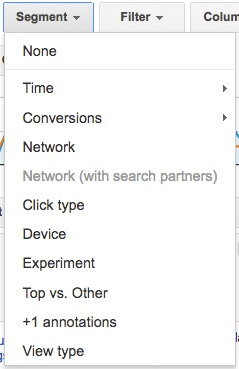
Then you can expand the view to determine exactly how the Search Partners perform compared to Google Search. In this account, we can see that Search Partners have a lower cost-per-conversion with a 906% ROAS. Google Search has a ROAS of 454%. In this case, the Search Partners are outperforming Google Search. So this will help you decide if it is worth staying in all networks or pulling out of the partners.
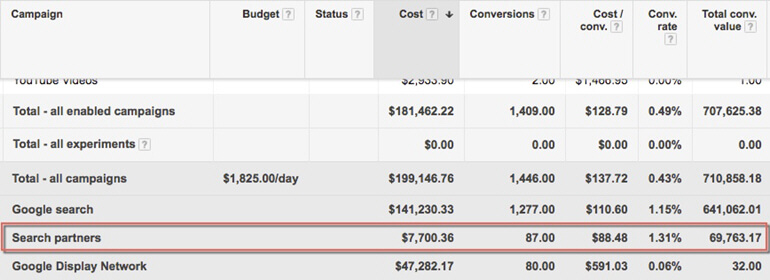
Domain or Landing Page
You can also use a domain or landing page to help build a keyword list. You can even select a comparison date range on to measure the difference in YoY traffic. Depending on the website, you will want to review these keywords to determine if they are relevant to the products or services you provide.
Tip: It is a good idea to include 10 keywords per Ad group. The Band Men ad group has 21 keywords and you might want to review this list to determine if any terms can be removed or excluded.
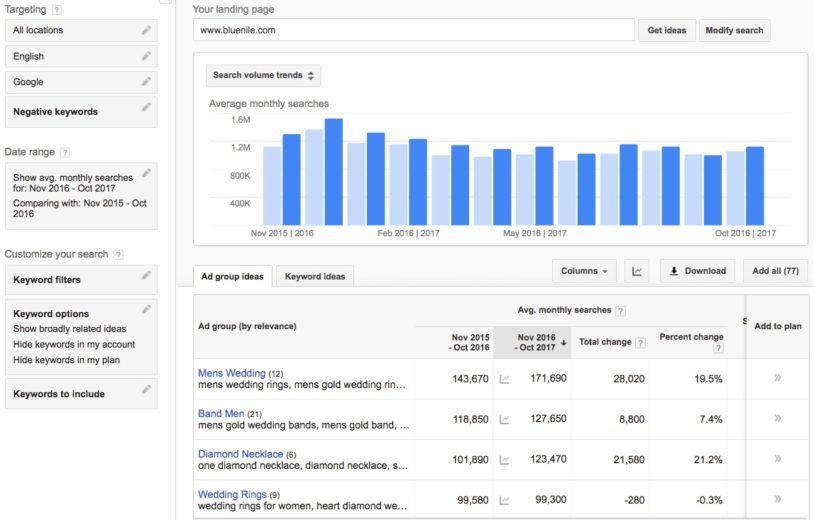
Negative Keywords
Sometimes the keyword tool will recommend keywords that are not relevant to your business based on your keywords or domain entry. This is an excellent opportunity to expand your negative keyword list. The more robust your negative list inside your account the better.
Keyword Plan
Once you have determined which Ad groups you would like to add to your campaign, you can click the arrows to the right of the keyword or Ad group to add them to your plan. Your plan will give you an estimate on the bid range, clicks, and expected budget.
Tip: It is a good idea to take the bid and price recommendations with a grain of salt. On many occasions I have found the actual bids to signifcantly different than what was estimated.
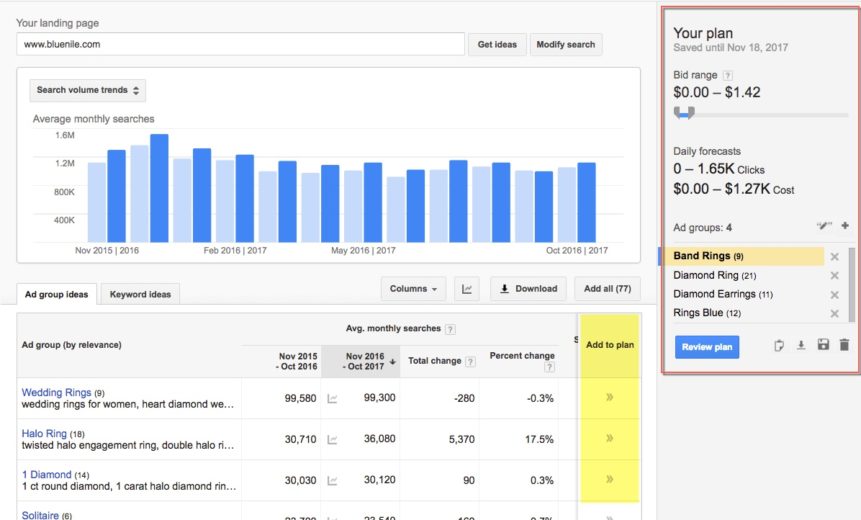
Closing Thoughts
The Keyword Planner is a fantastic tool for new campaign builds, improving existing campaign structure, finding new keywords, or even finding negative keywords. Hopefully this will help you maximize your ROAS.



